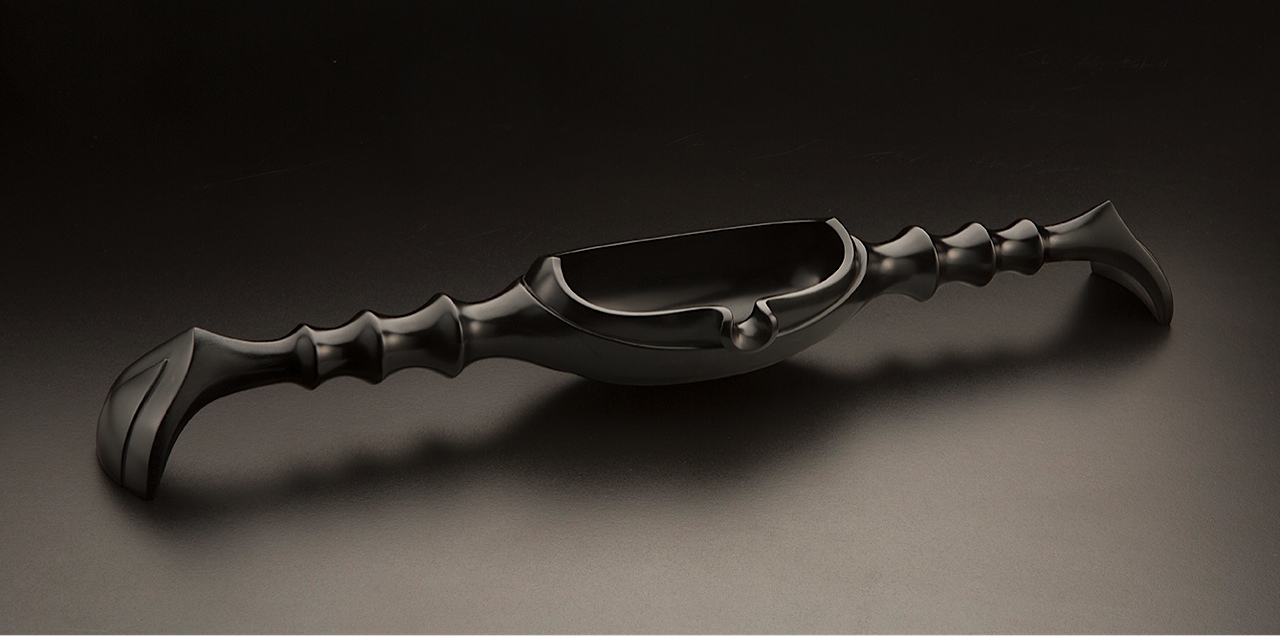AFRICAN EBONY
Ebony has been a much sought after article of commerce for hundreds of years. The ancient Phoenicians, Greeks, and Babylonians prized Ebony for use in furniture. It was also precious to the Egyptians and articles made from it have been found in old tombs. There are hundreds of species but the one we are concerned with here is West African Ebony (Diospyros crassiflora) mainly coming from Nigeria and Cameroon. This is the most common Ebony found in the marketplace today.
Usually found along watercourses, these trees grow to 50 feet in height and up to 24 inches in diameter. They are selectively logged after securing cutting rights from the forest owners who are generally Chiefs of local villages. The Chiefs allow only 10 trees per square kilometer to be harvested out of an average total of 80 trees found in a square kilometer. All the smaller trees are left to grow and the area is left untouched for a number of years. All the felling, chopping to length, removal of bark and sapwood, and transport to collection points alongside existing roads is done by chain saws, hand tools, and handwork. The cants are then transported to an urban center by small pickup trucks to eliminate damage to the forest. These cants are typically 2-7” thick x 5-12” wide x 4-6’ long.

Ebony sapwood is narrow and pinkish when freshly cut and darkens to a light reddish-brown. This is in sharp contrast to the heartwood, which is black, usually more or less streaked with silver or grey. Fortuitously, many of these lighter streaks fade or darken with time. We grade African Ebony into two color groups:
Black (B) - can have some slight streaking but the overall effect is black.
Colored (C) - a very distinctive striping of light and dark. Sometimes confused with Macassar Ebony, which is a classic striped Ebony species from Asia.
The heartwood is hard and heavy and when dry, weighing 52-64 lbs/cubic foot. The texture of the heartwood is fine with a straight grain and sometimes with a curly figure. The heartwood is insect resistant but old damage by pinhole borers (round holes approx. 1/16” diameter) is sometimes present. These are easily repaired using fine Ebony dust and Cyanoacrilate glue. Due to its density, holes for nails or screws must be pre-bored to prevent splitting.
Today, among the many uses for Ebony, parts for musical instruments is probably the most important. Violin family instruments, guitars, mandolins, ukuleles, pianos, and many others employ Ebony for fingerboards, bridge blanks, peg heads, end pins, keys covers, etc. Some woodwinds such as flutes and recorders are also made of Ebony. Other uses are for furniture and furniture accessories, cabinetry, carvings and sculptures, inlay and marquetry, knife handles, turnery, pool cues, gunstock tips and grips, walking sticks, jewelry, and other precious items.

